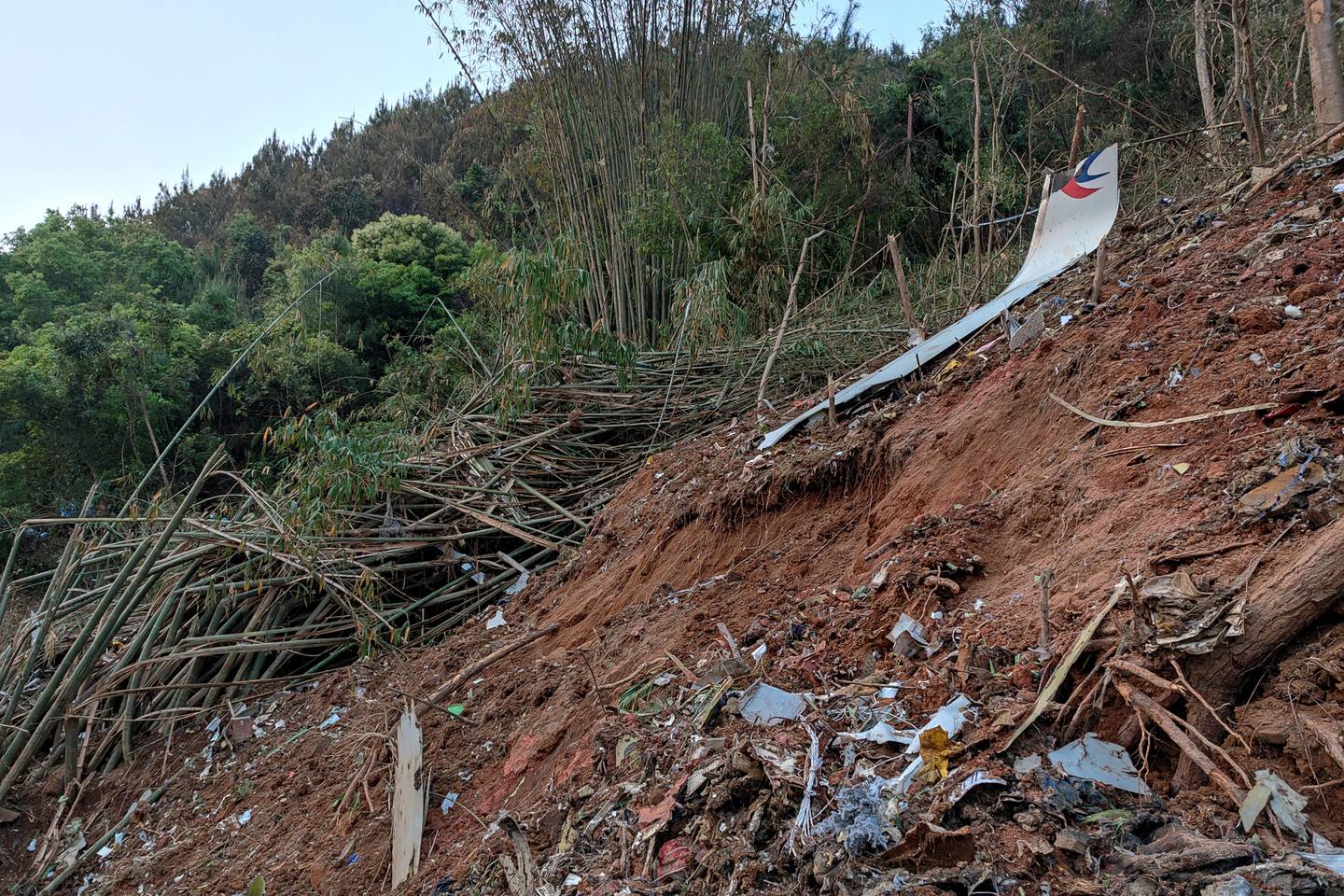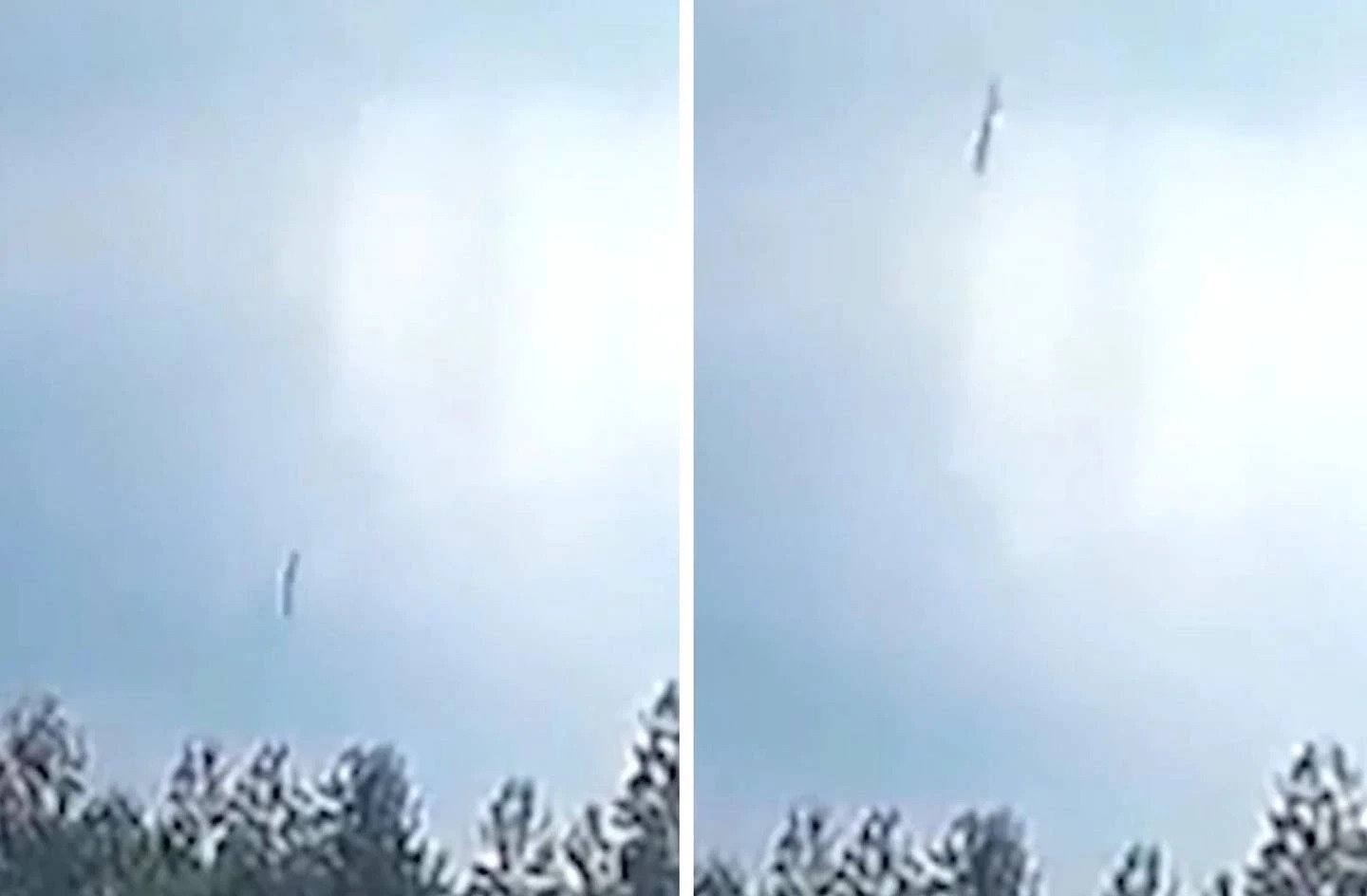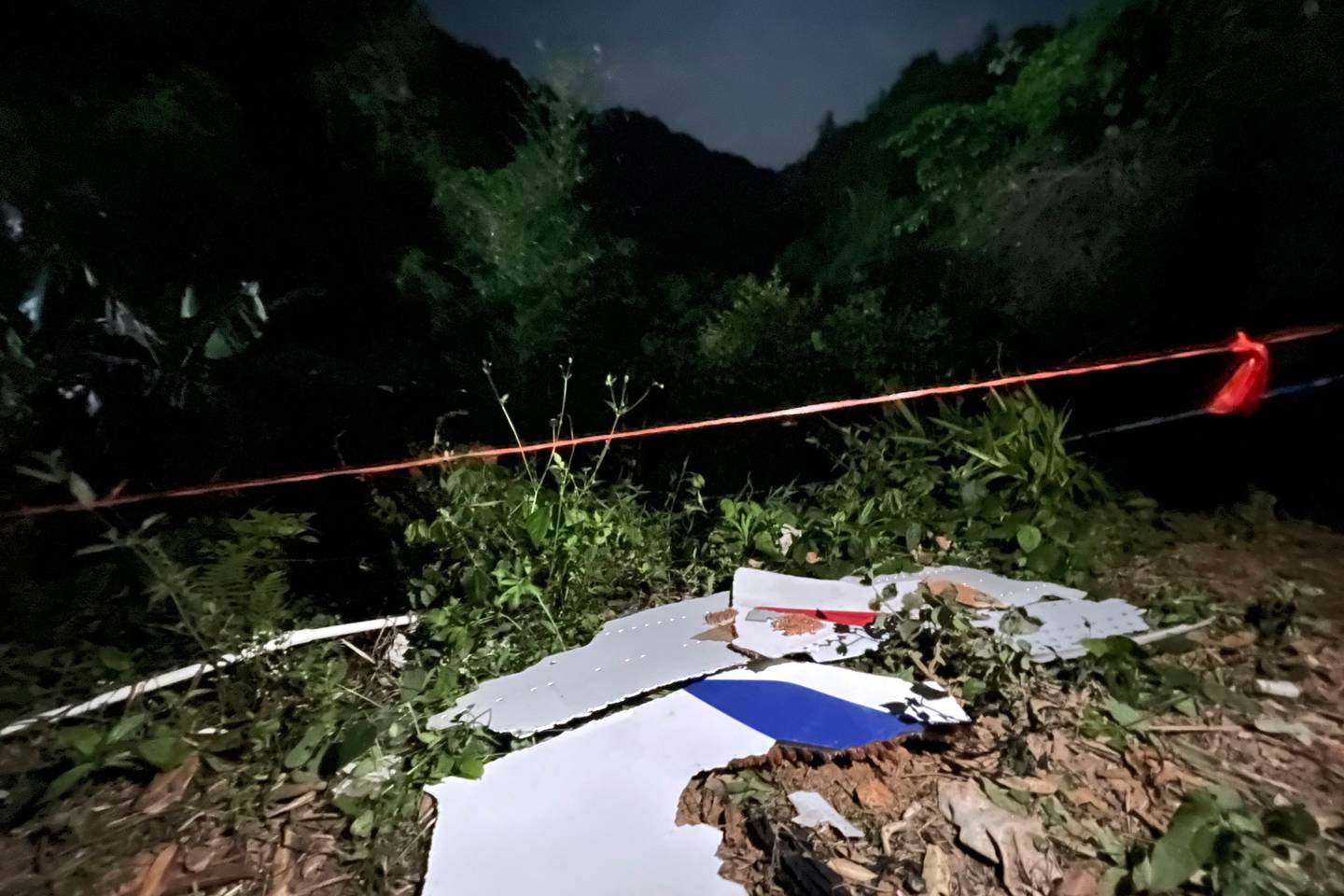In the hours after China Eastern's horrific passenger jet crash, which killed 132 people, the airline abruptly grounded all its Boeing 737-800s.
CCTV footage emerged on social media within hours of the deadly crash, reportedly showing the flight MU5735 nosediving vertically from 30,000 feet.
FlightRadar tracking data showed the aircraft cruising at 29,100ft at 2.20pm. Around two minutes later it had plummeted to just over 9000ft and 20 seconds after that it had fallen to just 3225ft. The data indicates a vertical descent at a terrifying 560km/h.
But while all eyes shifted to Boeing and the safety of the specific aircraft, Australian aviation expert Neil Hansford says the crash, which is the first for the Chinese carrier in 30 years, was unlikely to be caused by a technical issue.
"Even with total loss of power, no aircraft plummets to the ground from 20,000 feet in two minutes with an event at 8000 feet," Hansford explained to news.com.au.

A piece of wreckage of the China Eastern's flight MU5735 are seen after it crashed on the mountain in Tengxian County. Photo / AP
"I think aircraft technical failure can be ruled out and it will be an external event. I would get on a Boeing 737-800 in an instant with an Australian carrier, so my suggestion would be it won't be Boeing or aircraft technical related."
It is not yet clear what forced the sudden dip in altitude, but Hansford believes four likely scenarios could have led to the catastrophe.
"It is very unlikely the pilot passed out as the non-flying pilot would have been able to very safely take over and land the aircraft," he explained.
"Likely scenarios include pilot suicide, aircraft mid-air collision with military aircraft – they don't have transponders like civil aircraft – [flight MU5735] was struck by a missile or an on-board explosion."
"My tipping is a human-induced event or bought down by rogue missile. Debris looks like MH117 over Ukraine, and the Chinese are providing too much information this time, which is uncharacteristic."
Speaking to the Sun Online, UK aviation expert Sally Gethin said available flight data suggests a "10 to 20-second spell where one or more of the pilots regained consciousness and tried to save the plane" before it smashed into the ground.

China Eastern's flight MU5735 crashed on the mountain in Tengxian County.
Gethin said all 132 onboard "would have been unconscious" for the final plunge, and although pilots get plenty of simulator training on the ground – the real world provides a different set of challenges.
"In the real world, they can get overwhelmed or disorientated by sudden events. This is known as the startle effect, and it is very hard to train for that," she explained.
"Even experienced pilots can be caught off guard and that's when they can make poor judgments. Now there are efforts to recognise that and offer additional training."
Gethin said it was "unusual" that the co-pilot on board the flight had 30,000 hours of flight experience while the pilot had just 7000.
It is understood a third trainee pilot with just a few hundred hours was also on the doomed flight.
Speaking to news.com.au, aviation expert and editor-in-chief of Airlineratings.com Geoffrey Thomas said the fact there was "no warning from the cockpit crew" and the characteristics of the aircraft's descent suggests one of two causes for the crash.
"It would appear to have been either a catastrophic failure caused by major structural failure or a bomb," he said, adding "pilot suicide cannot be ruled out" either.
"The two black boxes will be critical to this investigation and hopefully they will be recovered shortly."

Debris is seen at the site of a plane crash in Tengxian County in southern China's Guangxi Zhuang Autonomous Region. Photo / AP
Thomas said the aircraft involved in the crash is one of the safest in the world, with more than 7000 in service around the world performing on average about four flights a day.
The newer model of the 737-800, the 737 MAX, is what was fitted with the Manoeuvring Characteristics Augmentation System (MCAS) system.
This variation of the 737 was involved in the Lion Air Flight 610 crash on October 29, 2018, and the Ethiopian Airlines Flight 302 in March 2019. Both crashed shortly after takeoff, killing everyone on board both planes.
Aviation authorities around the world grounded the aircraft in response between March 2019 and December 2020.
After the two crashes, it was revealed that the Federal Aviation Administration in the US was not made fully aware of the new MCAS system used by the MAX.
As a result, in January last year, the US Department of Justice found Boeing guilty of conspiracy to defraud the United States over the 737 MAX certification, for which they had to pay over US$2.5 billion in penalties and compensation.
"The 737-800 is the backbone of Australia's domestic airline fleet being operated by Qantas, Virgin Australia and Rex," Thomas said of the 737-800.
"The aircraft is Australia's most reliable and has never been involved in an accident in this country.
The 737-800 does not have the MCAS system.
"China's airline system is second only in size to the United States and this is the first major crash involving one of the country's three biggest airlines in 23 years."
- by Vanessa Brown, news.com.au
Take your Radio, Podcasts and Music with you









